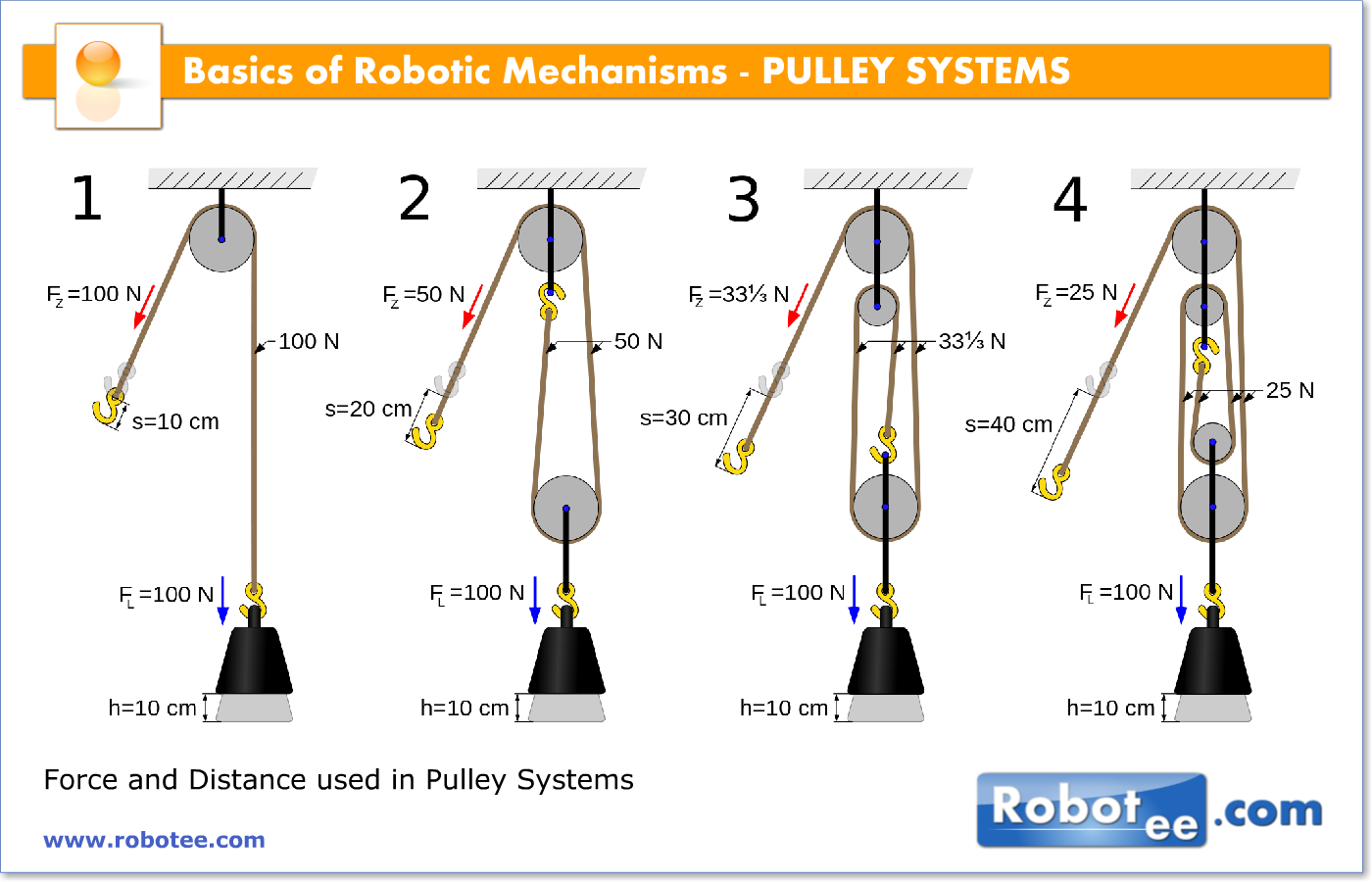Guys, few people in the shop got into this discussion today and while trying to prove my point someone brought up a great picture that made me wonder if everyone was crazy ...

https://s-media-cache-ak0.pinimg.com/originals/57/0e/06/570e06b8027cadd279645d200298241b.jpg
example 1 is essentially what you are creating but i've always heard and there is even documentation stating that that the climber system creates a mechanical advantage doubling your lifing load of the motor.
http://www.sgps.net/ground_support_systems2.html
or
https://books.google.com/books?id=hfeXAAAAQBAJ&pg=PA177&lpg=PA177&dq=self+climbing+truss+mechanical+advantage&source=bl&ots=vZD-kkyBAW&sig=9gEFO-7luib-2SbQPnOEsxpu12M&hl=en&sa=X&ved=0ahUKEwjRhtmc85_TAhXDbSYKHU52BsQQ6AEIOjAK#v=onepage&q=self climbing truss mechanical advantage&f=false
page 177
so can someone with more brain power and more eloquent that I please explain how this works and that i'm not crazy after all these years ... at least more than i thought i was.

https://s-media-cache-ak0.pinimg.com/originals/57/0e/06/570e06b8027cadd279645d200298241b.jpg
example 1 is essentially what you are creating but i've always heard and there is even documentation stating that that the climber system creates a mechanical advantage doubling your lifing load of the motor.
http://www.sgps.net/ground_support_systems2.html
or
https://books.google.com/books?id=hfeXAAAAQBAJ&pg=PA177&lpg=PA177&dq=self+climbing+truss+mechanical+advantage&source=bl&ots=vZD-kkyBAW&sig=9gEFO-7luib-2SbQPnOEsxpu12M&hl=en&sa=X&ved=0ahUKEwjRhtmc85_TAhXDbSYKHU52BsQQ6AEIOjAK#v=onepage&q=self climbing truss mechanical advantage&f=false
page 177
so can someone with more brain power and more eloquent that I please explain how this works and that i'm not crazy after all these years ... at least more than i thought i was.
Last edited by a moderator:



